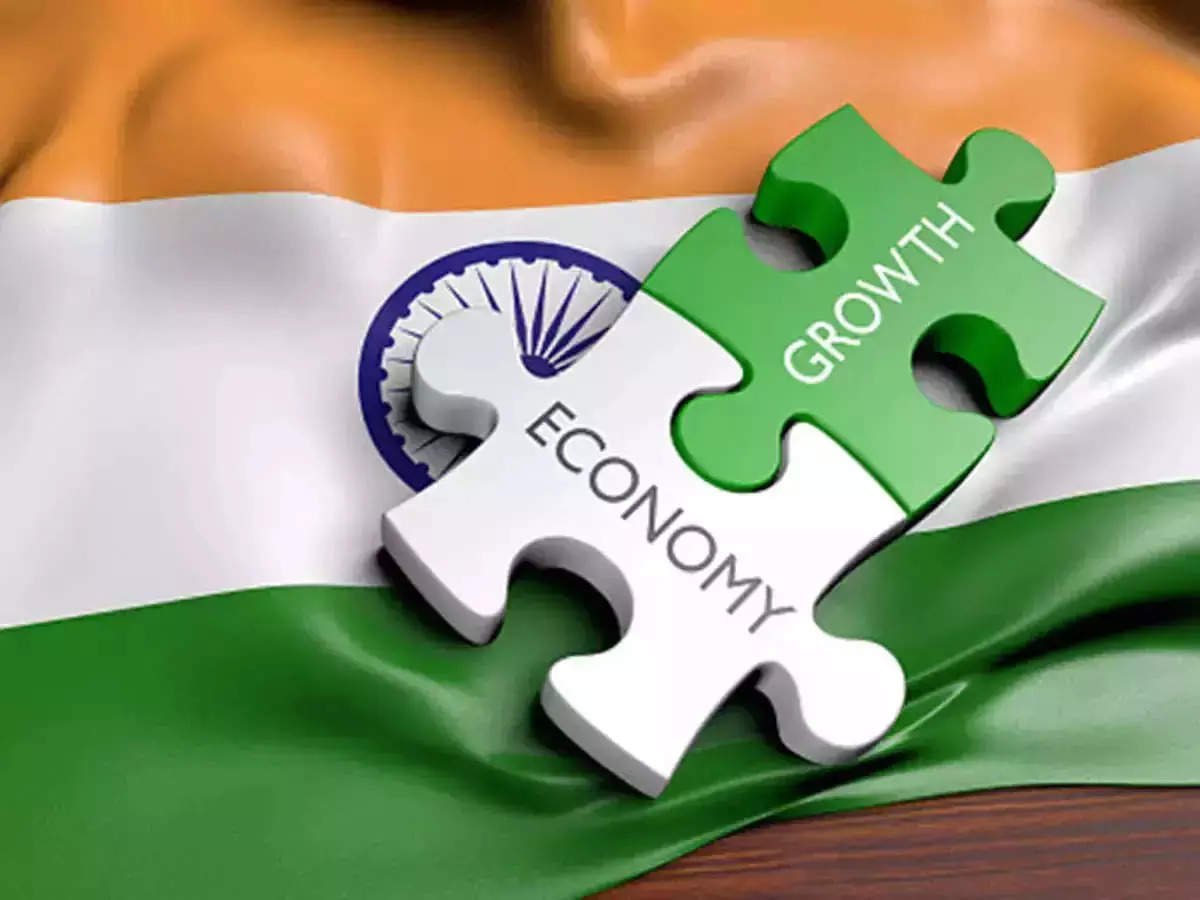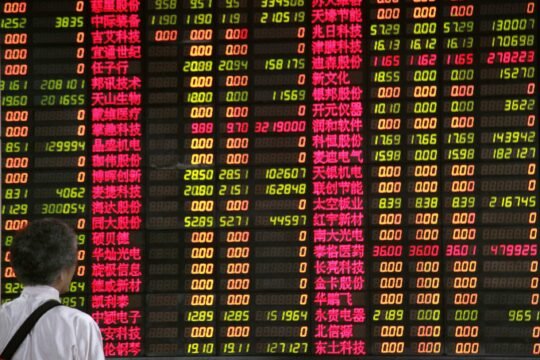In recent years, India has witnessed a remarkable transformation in its economic landscape. With a series of policy reforms and structural changes, the nation’s manufacturing sector and export market share have experienced significant growth.
Date: June 1, 2023
Place- New Delhi, India
A recent research report suggests that these trends are expected to continue, with profound implications for India’s GDP, consumption patterns, inflation, current account deficit, and financial markets.
Let us delve into the key findings of the report and analyze their potential impact on India’s economy.
Manufacturing and Capex Set to Rise:
The research report projects a new cycle in manufacturing and capital expenditure (capex), estimating that their share in GDP will increase by approximately 5 percentage points (ppt) by 2031. This surge in manufacturing and capex activity signals a boost in industrial production, job creation, and overall, India’s economic growth.
Data shows that India’s manufacturing sector has been steadily expanding. According to the Ministry of Statistics and Program Implementation, the Index of Industrial Production (IIP) registered a growth rate of 9.8% in the last fiscal year. Furthermore, government initiatives such as “Make in India” and investment in infrastructure development has contributed to the sector’s upward trajectory.
Export Market Share to Double:
India’s export market share is expected to reach 4.5% by 2031, nearly doubling from 2021 levels. This surge in exports is anticipated to be driven by gains across both goods and services sectors, leading to a broader base of export-driven growth.
Recent data from the Ministry of Commerce and Industry indicates that India’s merchandise exports have been on an upward trend. In the fiscal year 2021-2022, exports recorded a growth rate of 67.3%. The diversification of export markets and the promotion of services exports, including IT services and business process outsourcing, have played a vital role in driving this growth.
Consumption Basket Shift:
As India’s per capita income is projected to rise from US$2,200 currently to about US$5,200 by the fiscal year 2032, a significant shift in the consumption basket is expected. This shift will likely lead to increased discretionary consumption, as individuals have higher disposable incomes.
Studies have shown that rising incomes in India have led to changes in consumer preferences. Sectors such as e-commerce, organized retail, leisure, and entertainment have witnessed substantial growth. Furthermore, the expansion of the middle class and urbanization has fueled demand for automobiles, electronics, and other consumer goods.
Lower Volatility in Inflation and Interest Rates:
The research report suggests that inflation is expected to remain benign and less volatile in the coming years. This outlook implies that interest rate cycles will likely be shallower, potentially leading to more stable equity market cycles.
Data from the Reserve Bank of India reveals a relatively stable inflation rate in recent years. As the central bank continues to adopt prudent monetary policies and the government implements structural reforms, inflationary pressures have been moderated. Stable inflation and interest rates provide a conducive environment for businesses to plan their investments and promote sustainable growth.
Benign Trend in Current Account Deficit:
India’s structural transformation is anticipated to have positive implications for its external balance sheet. The report highlights a progressively narrower trend in the current account deficit (CAD), indicating improved saving-investment dynamics.
Over the past few years, India has witnessed a decline in the CAD as a percentage of GDP. This positive trend can be attributed to various factors, including increased export earnings, moderation in import growth, and steady foreign direct investment (FDI) inflows. A narrower CAD strengthens the nation’s external position and enhances its resilience to global economic shocks.
Profit Boom Expected:
The research report reveals that the share of profits in GDP has doubled since hitting all-time lows in 2020, and this upward trajectory is set to continue. Supply-side reforms implemented by the government are expected to drive a surge in investments, a moderation in the CAD, and an increase in credit to GDP ratio, thereby supporting robust profit growth.
Recent corporate earnings data substantiate this projection, with many sectors experiencing strong profit growth. The manufacturing, technology, and financial sectors have been the key contributors to this profit boom. Increased profitability enhances business confidence, fosters entrepreneurship, and attracts investment, further propelling India’s economic growth.
Lower Correlation with Oil Prices:
The research report highlights that India’s reduced reliance on foreign portfolio investments (FPI) for current account funding has diminished the stock market’s negative correlation with oil prices. This shift is particularly significant when oil prices rise due to supply disruptions.
Historically, fluctuations in oil prices have impacted India’s economy and financial markets. However, with a decreased dependence on FPIs and enhanced domestic funding sources, the Indian market has become less vulnerable to oil price shocks. This decreased correlation promotes stability and reduces the likelihood of sudden market downturns.
Lower Correlation with US Recession:
As India’s reliance on global capital market flows has diminished, the market’s sensitivity to a potential US recession and changes in US Federal Reserve interest rates seems to be fading. This reduced correlation indicates that India’s economy is becoming more self-reliant and less susceptible to external shocks.
Recent data suggests that India’s domestic investors have played a crucial role in driving the equity market, reducing the influence of global factors. The Indian government’s focus on promoting domestic investment, coupled with increased investor awareness and participation, has contributed to this decoupling from US economic conditions.
Valuation Re-rating:
The research report emphasizes that persistent domestic demand for stocks and a higher growth outlook have led to a re-rating of India’s equity valuations. While the market is trading at a premium compared to long-term historical averages, it remains below previous highs and in line with recent trends.
The bullish sentiment in India’s equity market reflects investors’ optimism about the country’s economic prospects. The availability of ample liquidity, improving corporate earnings, and favorable policy reforms have attracted domestic and international investors, driving stock prices higher.
India’s Beta to Emerging Markets (EM) Falls:
Improved macroeconomic stability and a reduction in dependence on global capital market flows to fund the CAD have led to a decline in India’s beta to EM. This reduction signifies that India’s market is becoming more insulated from broader EM market trends and external volatilities.
In recent years, India has made significant progress in strengthening its macroeconomic fundamentals, including fiscal consolidation, inflation management, and regulatory reforms. These measures have instilled confidence in investors and positioned India as an attractive investment destination.
Key Risks:
Global Recession:
A worldwide economic downturn could adversely impact India’s economic growth prospects, leading to reduced demand for exports, decreased investment flows, and overall contraction in various sectors.
Fragmented General Election Outcome in 2024:
The outcome of the general elections in 2024, if fragmented and lacking a stable majority government, could create uncertainty and hinder the implementation of crucial economic reforms, affecting investor confidence and economic stability.
Sharp Rises in Commodity Prices:
Supply outages and shortages in essential commodities can result in substantial price increases. Higher commodity prices could lead to inflationary pressures, reduced consumer spending, and increased input costs for businesses, potentially hampering India’s economic growth.
Shortages in Skilled Labor Supply:
Inadequate availability of skilled labor could pose challenges to the manufacturing and service sectors, limiting their capacity for expansion and innovation. Skill development initiatives and investments in education and training are essential to address this potential risk.
Policy Reversals or Delays:
Any unexpected reversal or delay in implementing critical policy reforms, such as regulatory changes or infrastructure projects, could undermine investor confidence and impede long-term India’s economic growth.
Geopolitical Instability:
Heightened geopolitical tensions or conflicts in the region could disrupt trade routes, negatively impacting India’s exports and overall economic stability.
Climate Change and Natural Disasters:
The increasing frequency and intensity of natural disasters, such as cyclones, floods, or droughts, can disrupt agricultural activities, damage infrastructure, and disrupt supply chains, posing significant risks to India’s economy.
Cybersecurity Threats:
With the growing reliance on technology and digital infrastructure, India faces the risk of cyber-attacks that could compromise critical systems, disrupt businesses, and undermine investor confidence.
Financial Market Volatility:
Sudden fluctuations in global financial markets, triggered by factors such as changes in interest rates, currency volatility, or investor sentiment, can impact capital flows and create volatility in India’s financial markets, potentially affecting economic stability.
Social Unrest and Political Instability:
Social unrest, labor strikes, or political instability could disrupt economic activities, hamper investment, and erode business confidence, leading to a slowdown in India’s economic growth.
It is crucial for policymakers to proactively address these risks through effective risk management strategies, robust policy frameworks, and adaptive measures to ensure sustained India’s economic growth and stability in India.
To sum up, India’s economic landscape is poised for significant changes in the coming years. The projected surge in manufacturing and capex, expanding export market share, shifting consumption patterns, and favorable macroeconomic conditions create a conducive environment for sustainable growth.
However, policymakers must remain vigilant and address key risks to safeguard India’s economic progress. As India embraces this transformative phase, it positions itself as a promising investment destination and a key player in the global economy.
Disclaimer: The information provided in this news article is intended for educational purposes only. The content shared by CurrencyVeda does not constitute financial or investment advice. While we strive to provide accurate and up-to-date information, we cannot guarantee the completeness or reliability of the content. Readers are advised to conduct their own research and consult with a qualified financial professional before making any investment decisions. CurrencyVeda shall not be held responsible for any financial losses or damages incurred as a result of the information provided.
References-
https://pib.gov.in/PressReleasePage.aspx?PRID=1916220
https://www.indiablooms.com/user-feed-times-xml.php




